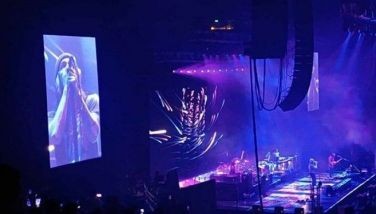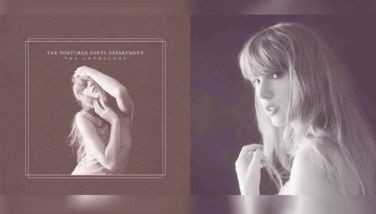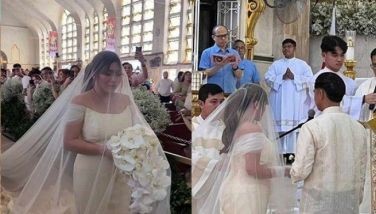The magic of faith
January 13, 2006 | 12:00am
 C.S. Lewis was allegedly reluctant to have the Narnia books adapted into film. The sight of a talking lion, he thought, might produce inappropriate titters. But had he lived to see the strides that filmmaking technology would take, he probably would have had a different opinion. The Chronicles of Narnia: The Lion, The Witch and The Wardrobe, directed by Andrew Adamson, has little that is unintentionally risible and much that inspires awe.
C.S. Lewis was allegedly reluctant to have the Narnia books adapted into film. The sight of a talking lion, he thought, might produce inappropriate titters. But had he lived to see the strides that filmmaking technology would take, he probably would have had a different opinion. The Chronicles of Narnia: The Lion, The Witch and The Wardrobe, directed by Andrew Adamson, has little that is unintentionally risible and much that inspires awe.
The first of the seven books in the series to be published, The Lion, The Witch and The Wardrobe takes readers to World War II. The four Pevensie children, Peter, Susan, Edmund, and Lucy, have been removed to the country to escape the "Blitz." As in Nesbit’s Five Children and It, another children’s classic with a similar premise and recently adapted into a movie (alas, severely underrated), the children stay in an eccentric’s mansion (there, an uncle’s; here, a professor’s). In a game of hide-and-seek, Lucy finds a wardrobe in one of the rooms. When she steps into it, she discovers Narnia, a world inhabited by fauns, talking beasts, walking trees and other mythological creatures.
Narnia is under the spell of the White Witch, who has made it "always winter but never Christmas." But the great lion Aslan, the true ruler of Narnia, has returned and with the "sons of Adam" and the "daughters of Eve" newly come to Narnia, threatens to put an end to the Witch’s reign. War ensues between the forces of the Witch and those of Aslan. Victory, of course, is the lion’s, but it comes not without a sacrifice.
Adamson’s film is not so close a rendering of Lewis’ book as that made by the BBC in the late ‘80s. While sticking to the outline of the original, it takes away from but more often adds to it – mostly with the intent of heightening the action. Thus, the battle of Beruna is extended, with gryphons and a phoenix added into the melee. Peter twice confronts Maugrim, the lupine chief-of-police of the Witch. The children’s flight from the Beavers’ is more perilous than it is in the book, and the Witch uses two sabers instead of a stone knife to duel with Peter (the back flips may remind one of The Matrix). Here is technology maximized without being gratuitous.
Adamson also expands the psychological dimension of the book. The four children are still recognizably Lewis’ creations, but they are also more round. Edmund is less caddish, and Lucy more catty (though only ever so slightly). Adamson stresses the rivalry between Peter and Edmund to provide a plausible motive for Edmund’s actions and adds a prologue to show Edmund as essentially good. In the prison scene – another of Adamson’s happy additions – Edmund gets another redemptive moment when he covers up for Mr. Tumnus; and when the Witch exposes his guilt to the faun, our sympathies are for him.
What of the theology? Lewis’ books, whatever else they may be, are at heart Christian and were among his efforts at popularizing Christianity. In The Voyage of the Dawn Treader, Aslan tells Edmund and Lucy, "But there (our world) I have another name. You must learn to know me by that name. This was the very reason why you were brought to Narnia, that by knowing me here for a little, you may know me better there." The symbolism in the book is not heavy-handed, but the Christian reader will easily recognize the Passion of Christ and, in the episode of the Stone Table, Lewis’ solution, which is also Christ’s, to the dilemma in Eden, that is, Adam should have offered to die in Eve’s place.
Perhaps because movies are made for producers to make money, Adamson does not play up the theological elements. (Mel Gibson’s The Passion of the Christ is an exception.) Believers and non-believers can enjoy the movie simply as a tale of the triumph of good over evil. One’s appreciation, of course, deepens in proportion to one’s religious leanings or familiarity with the theology.
If there is something that might diminish the film in today’s more secularized world, it is Lewis’ misogynist prejudices. Lewis was proceeding from a worldview that saw the feminine and masculine as hierarchically related and which deployed gendered imagery to depict good and evil. Thus, the White Witch is evil because she overturns the cosmic order, appropriating for herself what is for Lewis an essentially masculine position. Lucy and Susan are her foils. Although they are given weapons, they are told to stay away, because "battles are ugly when women fight." Lewis once wrote that we are all feminine in relation to God, and here nature itself is restored only with the return of the masculine.
But that is Lewis, and politics ought to be taken as part of the premise. Barring that, one finds much to enjoy here – the domestic squabbles of the Beavers, the occasional wisecracks among the children, the music and special effects, Tilda Swinton’s frosty White Witch, (an interesting contrast to Barbara Kellerman’s more histrionic characterization in the BBC production) – and equally much to ponder on: the interplay of justice and mercy, the annulment of the Old Law with the coming of the New, the drama of sin and salvation.
As such, The Chronicles of Narnia: The Lion, The Witch and The Wardrobe is possibly a glorious start of another year of movie viewing. It is an experience of the "deep magic" of cinema and possibly of the "deeper magic" of faith.
BrandSpace Articles
<
>
- Latest
- Trending
Trending
Latest
Trending
Latest
Recommended



























